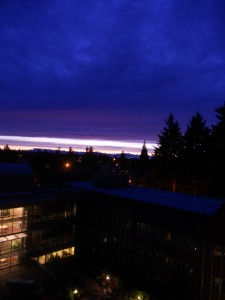Week Five…already? It’s hard to believe that a whole month has gone by. Nonetheless, I am honored to have the opportunity to conduct summer research and write about my experiences.
In this entry, I’d like to write about what a typical research day looks like.
A typical work day varies in Thompson-Harned (the Math and Science building). Some researchers have a lot of field days in which they look at plants, birds, or ocean life. Others spend their time in the lab looking at smaller study organisms such as bacteria, fruit flies, and snails.
In my lab, I have a combination of field work and lab work.
If it’s a field day, I usually go out to Ruston Way in the morning time (typically before 12pm) and do some lab work in the afternoon. If it’s a lab day, the schedule looks similar to this:
9 am: Arrive, write down the procedure for the day, set up to run experiments (label test tubes, pull out any reagents needed for the day, mix liquid solutions together that will be needed throughout the day).
10 am-12 pm: DNA amplification or purification.
DNA amplification requires putting a small amount of DNA, and other liquids that help the DNA amplify, in a small capped test tube. The tubes go in a machine that heats up and cools down to provide conditions in which the DNA will replicate. DNA amplification takes about 2 ½ to 3 hours. DNA purification requires Eppendorf tubes (see the picture from my first post) and different reagents at different steps of the procedure. DNA purification also takes about 2-3 hours.
12-12:30 or 12-1: Lunch
Usually I make my own lunch, but sometimes it’s nice to plan a lunch with friends. The amount of time for lunch depends on when you need to be back for your experiments.
12:30 or 1 pm to 3pm: Run more tests or experiments. In the case of DNA amplification, the next step is to test to see if the DNA amplified. This process takes a couple of hours. DNA extraction is done throughout the afternoon if you have more samples to extract DNA from.
Around 3 or 3:30, after all the experiments have finished, there are multiple things a researcher could do. For the next hour or two, I usually find myself doing a variety of the following: looking at academic papers (literature research), restocking my lab (replacing what I have used for the day), talking about results with the professors that I’m working with, and planning for the next day(s) or week(s) to name a few.
Anywhere from 4-5:30 is when I usually go home. However, before leaving, I wipe down my workstation with ethanol and make sure the lights and machines are turned off.
And in case you’re working late, you just might see something like this. The sunset! Isn’t it beautiful?

